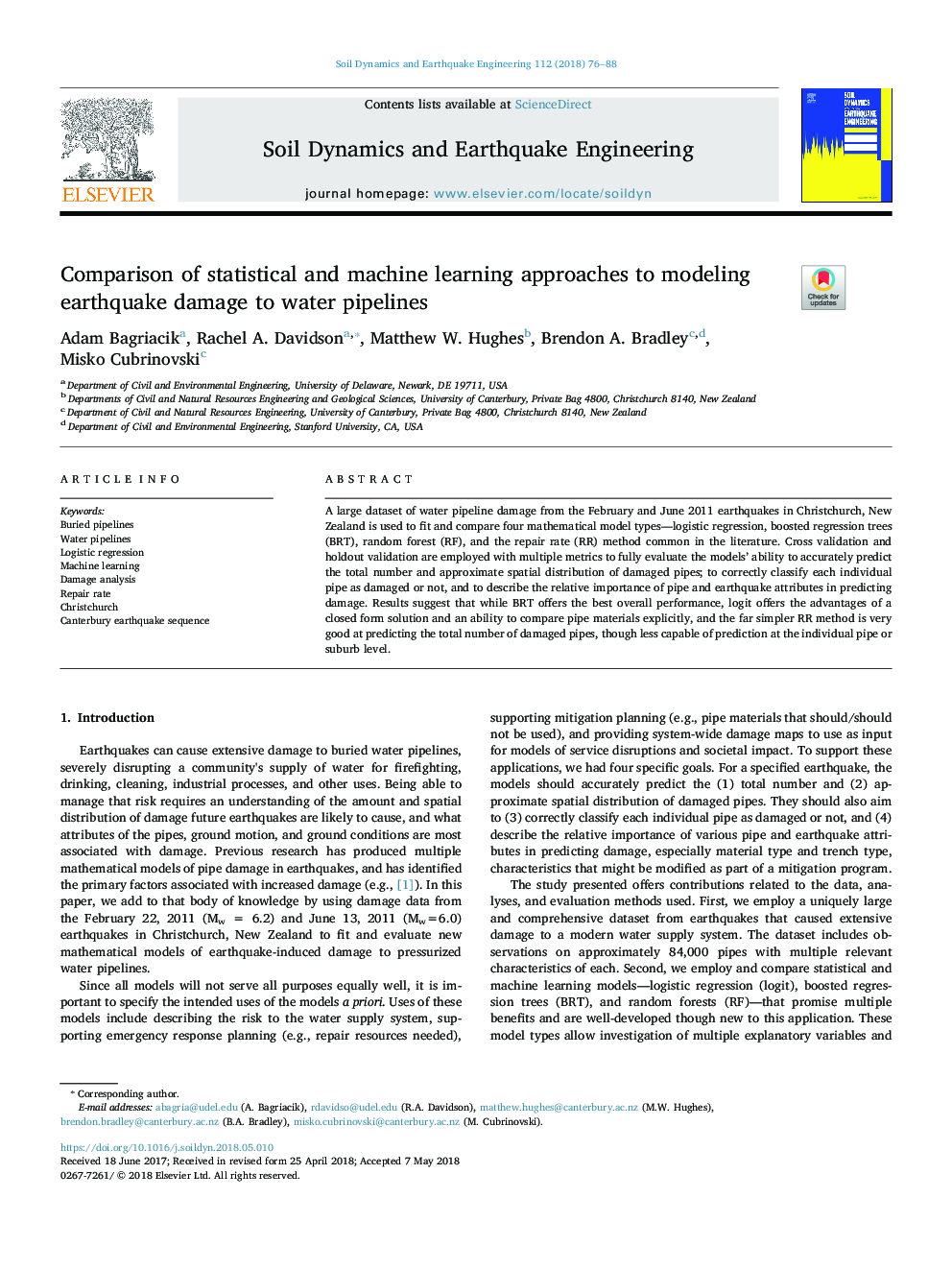| Article ID | Journal | Published Year | Pages | File Type |
|---|---|---|---|---|
| 6769839 | Soil Dynamics and Earthquake Engineering | 2018 | 13 Pages |
Abstract
A large dataset of water pipeline damage from the February and June 2011 earthquakes in Christchurch, New Zealand is used to fit and compare four mathematical model types-logistic regression, boosted regression trees (BRT), random forest (RF), and the repair rate (RR) method common in the literature. Cross validation and holdout validation are employed with multiple metrics to fully evaluate the models' ability to accurately predict the total number and approximate spatial distribution of damaged pipes; to correctly classify each individual pipe as damaged or not, and to describe the relative importance of pipe and earthquake attributes in predicting damage. Results suggest that while BRT offers the best overall performance, logit offers the advantages of a closed form solution and an ability to compare pipe materials explicitly, and the far simpler RR method is very good at predicting the total number of damaged pipes, though less capable of prediction at the individual pipe or suburb level.
Keywords
Related Topics
Physical Sciences and Engineering
Earth and Planetary Sciences
Geotechnical Engineering and Engineering Geology
Authors
Adam Bagriacik, Rachel A. Davidson, Matthew W. Hughes, Brendon A. Bradley, Misko Cubrinovski,
